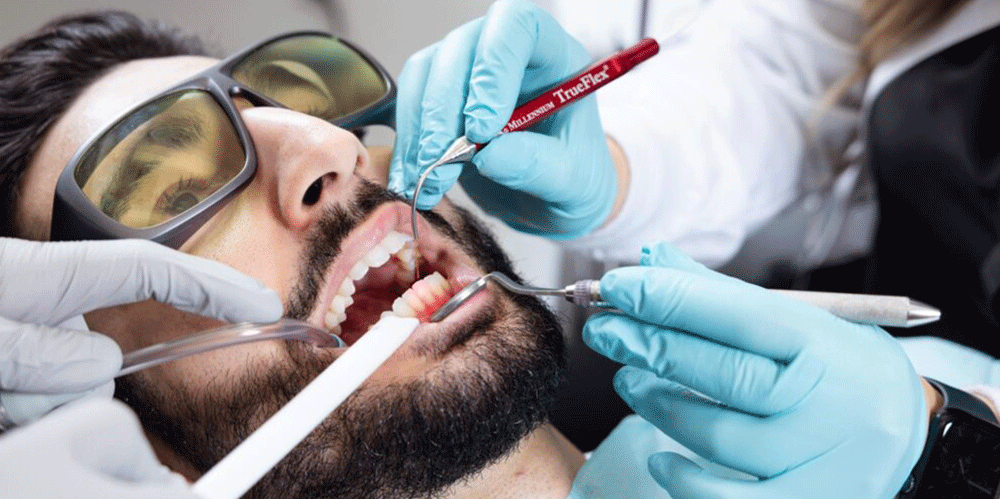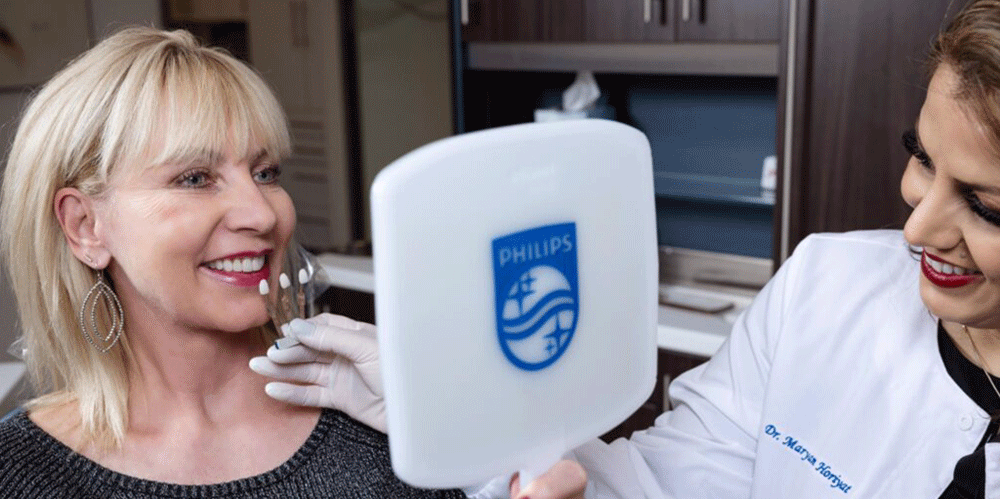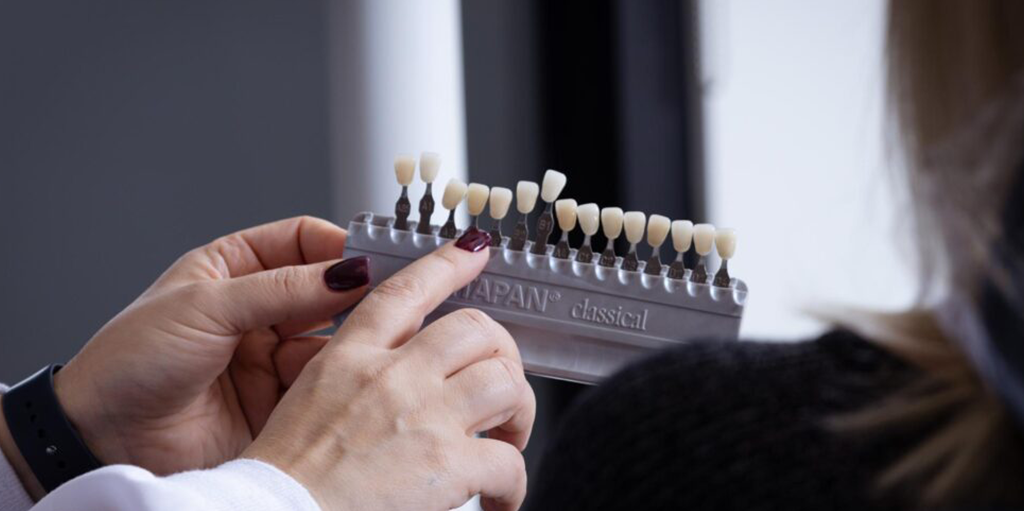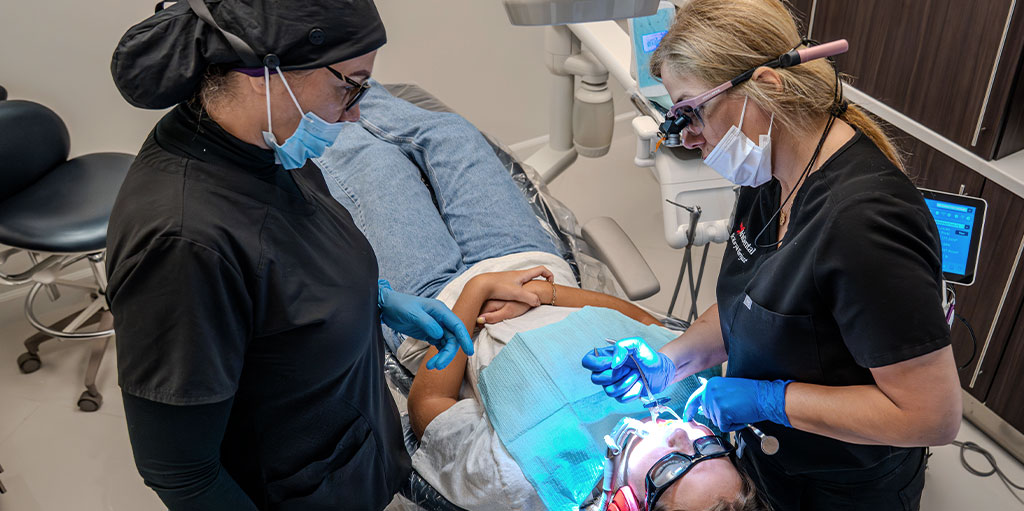A dental implant procedure may be vague or even scary for many who are not big fans of dental surgeries. However, if you know the process, you will better understand how well your doctor is performing the procedure. So, in this article, we have created a step-by-step for the dental implant process. Lay back and enjoy it. It’s not that scary.
Initial Consultation and Assessment
The dental implant procedure starts with a visit to your dentist. Your dentist will let you know whether you are an appropriate candidate for dental implants through a comprehensive examination. If your dentist recommends dental implants, go over the benefits, risks, and even alternatives with him so that you can make your decision on the mode of treatment with complete knowledge.
During the dental examination, the specialist may use 3D images or X-rays. These images are painless and are in no way harmful to you. Further, since dental implants include one or more surgeries, your medical history will be examined extensively. If you have any specific disease, for instance, heart disease, bone disease, etc., or if you are undergoing any medication, inform your doctor.
Treatment Plan
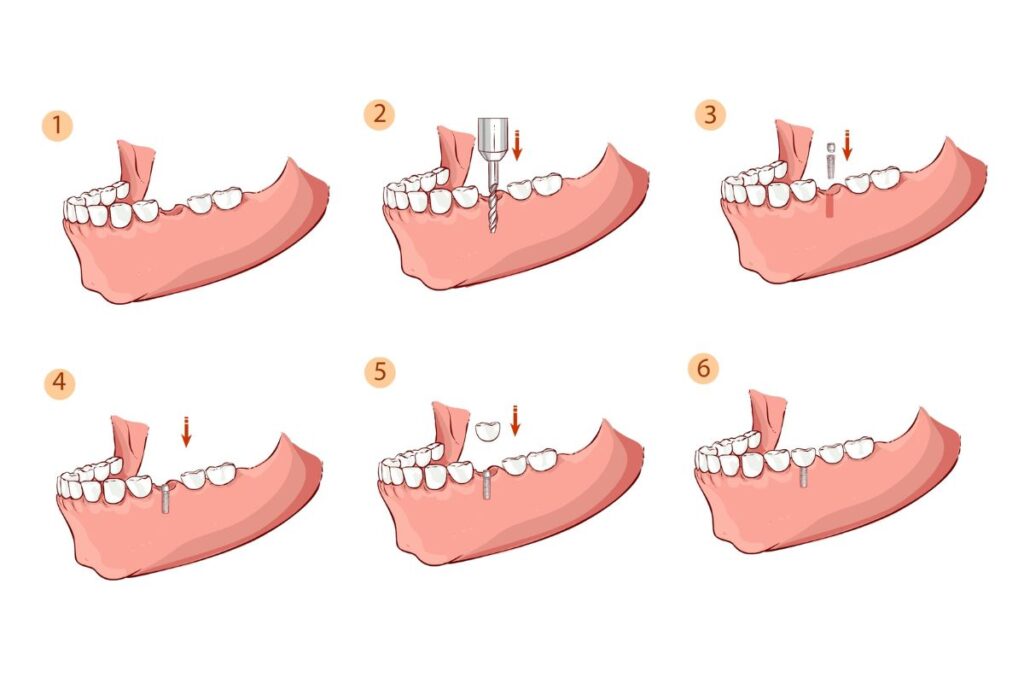
After you have chosen dental implants, a treatment plan will be developed for you and the dental implant procedure will be clearer for you. The plan is specific to you and depends on various factors such as the condition of your teeth and jawbone, and the number of missing teeth. Additionally, processes such as local anesthesia, sedation, and general anesthesia may be used for the surgery. You can determine the most appropriate course with the guidance and help of your dentist.
Pre-Operative Instructions
Your treatment plan will be completed, and you’ll understand what to expect, and your dentist will give you specific instructions. Nonetheless, the following are some general guidelines to follow before your implant surgery:
- Do not eat or drink anything for about 8 hours before your surgery, especially if IV sedation or general anesthesia is used. If you are given a “premedication,” drink minimal water with it.
- For those under 18, a legal guardian or parent is required. For adults, some types of sedation require a person to drive you home after surgery.
- It’s best to schedule your day to be free in order to rest easily after your surgery.
- Also, fill up your fridge with soft, non-acidic foods, such as yogurt or ice cream, for the first few days.
- Though smoking in general decreases the likelihood of implant success, you will enjoy more implant success if you refrain from smoking for at least 24 hours before your surgery.
- Wear light, loose-fitting clothing with short sleeves and no jewelry on the day of the surgery. It is best to also have little or no makeup on.
These recommendations will make both you and your medical team more comfortable throughout the dental implant procedure.
Tooth Extraction
Before the dental implant procedure can begin, you will likely have a decayed or damaged tooth that will need to be extracted. Extracting a tooth that can no longer be restored reduces the amount of bacteria in the mouth, which helps prevent infection after surgery.
In some cases, if the jawbone is healthy enough, it’s even possible to have a dental implant placed on the same day as the tooth extraction. In most cases, however, the dentist will suggest waiting 3 to 6 months after the tooth extraction to let the area fully heal.
The waiting time between the tooth extraction and implant placement should not be too long. It is due to the fact that the jawbone may become too thin or weak to support the implant, and the other neighboring primary teeth may get pushed into the space between the teeth, so that the teeth deform in shape and become crooked. Therefore, the optimal time of implant placement after tooth extraction has to be determined according to the dentist’s tests and judgment.
Implants are zirconia screws inserted into your jawbone to act as a natural tooth. Holistic dentists recommend a zirconia implant as it is a safer and healthier option since it doesn’t contain any metal (especially mercury) and doesn’t bleed into your gum, causing many health problems.
Bone Grafting (if needed)
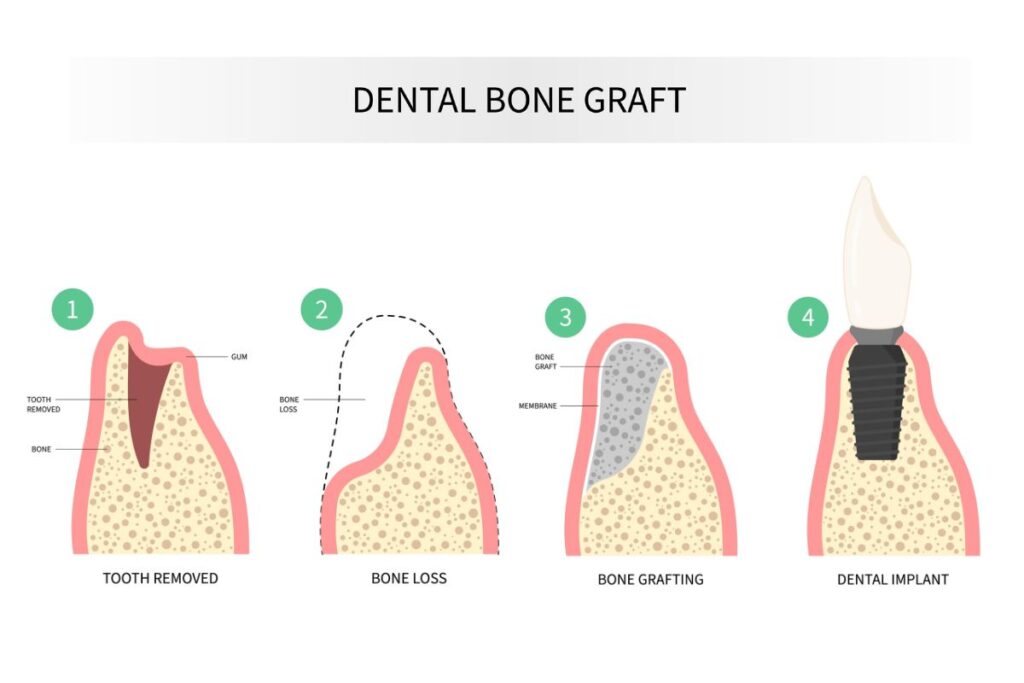
Bone grafting is another step in the dental implant procedure. But this one isn’t always required. You may require a bone graft if your jawbone is very soft or has receded. This is usually done in a procedure before your implant procedure. This strengthens the jawbone and gives a more stable base to the implant. It may take a few months for the grafted bone to grow enough new bone to be strong enough to hold the dental implant. If you only need a minor bone graft, your dental professional will do this at the same time as your implant surgery.
Implant Placement
There are numerous types of implants. The most common type of dental implant is an endosteal implant, which is a small, cylinder-shaped post made of zirconia. You can discuss the type of implant and also the brand of the manufacturer with your dentist in advance.
To place the implant, the surgeon first makes an incision in the gum to expose the jawbone. Then, a hole is made in the jawbone to insert the implant. This metal post acts as the root of the tooth. At this stage of the dental implant procedure, the crown is not yet placed on it. This is because it takes some time for the bone to grow around the implant and the implant to become part of the natural gum line.
Healing and Osseointegration
Typically, your dentist cannot place the abutment immediately after implant body placement surgery. Because the implant base and your jawbone must first fuse before continuing the dental implant procedure. This process is called osseointegration. Dental implant healing time varies from person to person and can take anywhere from 3 to 9 months.
Abutment Placement
After healing and osseointegration, the next stage of the dental implant procedure starts. Now it’s time to place the abutment on the base. This piece connects the implant base to the crown. A local anesthetic is injected to place the abutment. The surgeon will then open your gum and attach the abutment to the dental implant. You won’t feel any pain, just a little pressure on your gum. A temporary crown will be placed over the abutment until the permanent crown is ready.
Sometimes, the dentist will place the implant and abutment in one appointment. But not everyone prefers it. Because the abutment is visible when you smile or talk. After the abutment is placed by the surgeon, your gums will need to heal for at least two weeks before your general dentist or prosthodontist can attach the denture.
Restoration (Crown Placement)
The last stage of the dental implant procedure is crown placement. To prepare a permanent crown, the implant must be molded, so the crown is matched to the other teeth. The material is poured into the molding tray and placed in the desired area. These trays come in different types and have slight differences. After the mold is made, which takes between 5 and 10 minutes, the crown can be made from it and placed on the abutment.
Usually, the implant crown is made as a fixed crown and screwed onto the abutment. However, a removable crown can also be used. This method is used to implant several teeth together. The artificial tooth can be removed from the implant and cleaned. Your artificial tooth may also be a combination of several fixed and removable teeth.
You should take care of the crown like a natural tooth. Use a toothbrush and floss every day. No special tools are needed to clean the crown. If you have any questions about the care or complications of implants, it is best to consult your dentist.
Follow-up Care
Dental implant follow-up care is divided into two main phases: immediate post-surgical care and long-term care to maintain the implant. Careful adherence to this care is critical to the success and longevity of the implant.
Post-Surgery Care
If you went for a dental implant with local anesthesia, you may leave the hospital after the procedure is completed and you have recovered fully. However, if you went for sedation for your dental implant procedure, you will have to recover in the hospital a little longer. You may need someone to take you home.
After you go home, rest and avoid touching and washing the wound, or spitting. For 24 hours after your treatment, do not drink alcohol, do not smoke, and drink cool liquids (without a straw). Also, eat very soft foods and do not put pressure on the wound. Use an ice pack to control swelling and apply pressure by biting on gauze placed on the implant site to control bleeding. If the bleeding is very heavy, call your doctor.
You can go to work or university the day after your implant placement surgery. But do not brush your teeth until the third day. If your doctor has prescribed painkillers, mouthwashes, or antibiotics, take the medications as directed.
Recovery Timelines
Now that we understand the dental implant procedure, let’s take a look at dental implant recovery timelines. The recovery timeline for traditional implants and Same-Day implants is provided to help you better understand the amount of time required for recovery for each method.
| Stage | Process Time |
| Initial recovery period: 1 to 2 weeks after surgery | Initial recovery period: 1 to 2 weeks after surgery |
| Stage 2: Osseointegration | 3 to 6 months |
| Stage 3: Abutment placement and impression | About 1 to 2 weeks |
| Step 4: Placement of the final crown (1-2 sessions) | Total healing and treatment time: Approximately 4-9 months |
Long-Term Care
After the dental implant procedure is done and the final crown is cemented, good hygiene should be followed to keep both the implant and tissue healthy. Implants should be cleaned as much as natural teeth. Brush your teeth twice a day and floss every day. Floss specifically designed for implants, or a water flosser, can be used to clean around the implant. An interdental brush can be used to clean between the implants, also.
Routine checkup appointments with your dentist (every 6 months). Your dentist will examine the health of the implant, gum, and bone around it, and may clean the area around the implant if there is plaque and tartar present.
Don’t crunch hard foods, such as ice or hard nuts, on your implant. If you grind your teeth, wear a night guard to prevent the implant from becoming overloaded. Along with all these precautions, a good diet with plenty of calcium and vitamin D will maintain your bones and your implants in good health. Following these rules will allow you to have your implants for decades, maybe a lifetime.
What is the most difficult part of dental implant surgery?
One of the most difficult parts of the dental implant procedure is the surgery to place the implant. Regardless of whether you opt for same-day implants or traditional ones, you are bound to experience some discomfort. Some of the discomforts include face and gum swelling, bruising of the skin and gums, pain at the site of the implant, and bleeding. You may need painkillers or antibiotics after your dental implant surgery. Having a capable medical team to support will make you find it convenient to go through the treatment process. Call Aria Dental’s expert team today for a consultation.




